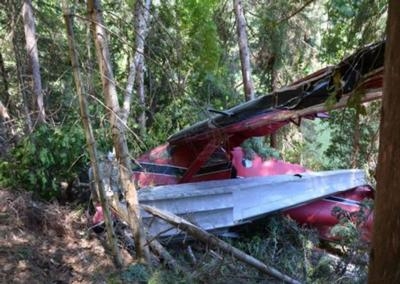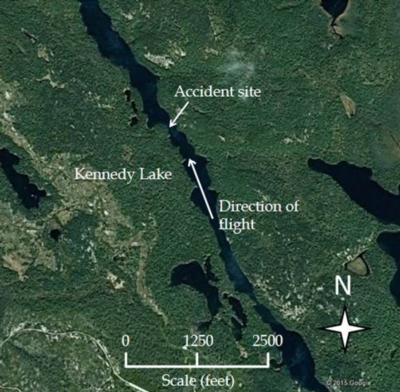Tue, Nov 24, 2015
Pilot Lost Control On Landing In June, 2014
The Transportation Safety Board of Canada (TSB) has released its investigation report (A14O0105) into the June 2014 loss of control on landing in Kennedy Lake, Ontario.

On 25 June 2014, a float-equipped de Havilland DHC-2 Beaver aircraft from Sudbury Aviation Limited was on approach to Kennedy Lake, Ontario, with the pilot and two passengers on board, when control of the aircraft was lost. The pilot attempted to regain control of the aircraft but was unsuccessful and the aircraft struck the terrain above the shoreline. The pilot and one passenger received minor injuries.
The TSB investigation determined that, prior to touchdown, the aircraft encountered a gusty crosswind and turbulence. This initiated an uncommanded yaw and wing drop indicating an aerodynamic stall. The investigation found that there is an increased risk that the pilot may not be aware of an impending aerodynamic stall if an aircraft is not equipped with a stall warning system. There was no such system installed on the occurrence aircraft, nor was it required to have one.
Investigators also identified that the pilot was not wearing the shoulder harness in this instance. If a shoulder harness restricts pilot movement and the ability to reach the water rudders, there is a risk that the pilot will not use it. However, there is an increased risk of injury or death in an accident if a shoulder harness is not worn.

Following the investigation into the May 2012 de Havilland DHC-2 accident at Lillabelle Lake, the TSB recommended that all seaplanes in commercial service certificated for nine or fewer passengers be fitted with seatbelts that include shoulder harnesses on all passenger seats (A13-03). Because Transport Canada's response did not contain details of any action which has been taken or proposed that will reduce or eliminate the safety deficiency, it will continue to put persons at risk; therefore, the TSB assessment of the response to the recommendation remains unsatisfactory.
(Source: Canada Transportation Safety Board news release. Images from TSB report)
More News
Airplane Bounced About 3 Ft Then Touched Back Down And Then, With No Brakes Applied, The Airplane Began Veering To The Left Analysis: The pilot entered the airport traffic pattern >[...]
Aero Linx: British Microlight Aircraft Association (BMAA) The primary focus within all aviation activity is SAFETY. In all aspects of our sport SAFETY must come first, whether it b>[...]
From SnF25 (YouTube Edition): William Wynne Builds Practical Aircraft Engines on the Corvair Platform Seeking an affordable alternative to the traditional aircraft engine options, >[...]
How To Get A Story On Aero-TV News/Feature Programming How do I submit a story idea or lead to Aero-TV? If you would like to submit a story idea or lead, please contact Jim Campbel>[...]
From 2023 (YouTube Edition): Bridge of CiES CiES Inc. is a Bend, Oregon-based designer and manufacturer of modular embedded aircraft systems and sensors. The company’s fuel-l>[...]
 NTSB Final Report: Aviat A1
NTSB Final Report: Aviat A1 ANN's Daily Aero-Linx (07.08.25)
ANN's Daily Aero-Linx (07.08.25) Classic Aero-TV: Fly Corvairs Reliable Engine Alternative
Classic Aero-TV: Fly Corvairs Reliable Engine Alternative ANN FAQ: Contributing To Aero-TV
ANN FAQ: Contributing To Aero-TV Classic Aero-TV: CiES Fuel-Quantity and e-Throttle Systems Praised
Classic Aero-TV: CiES Fuel-Quantity and e-Throttle Systems Praised




